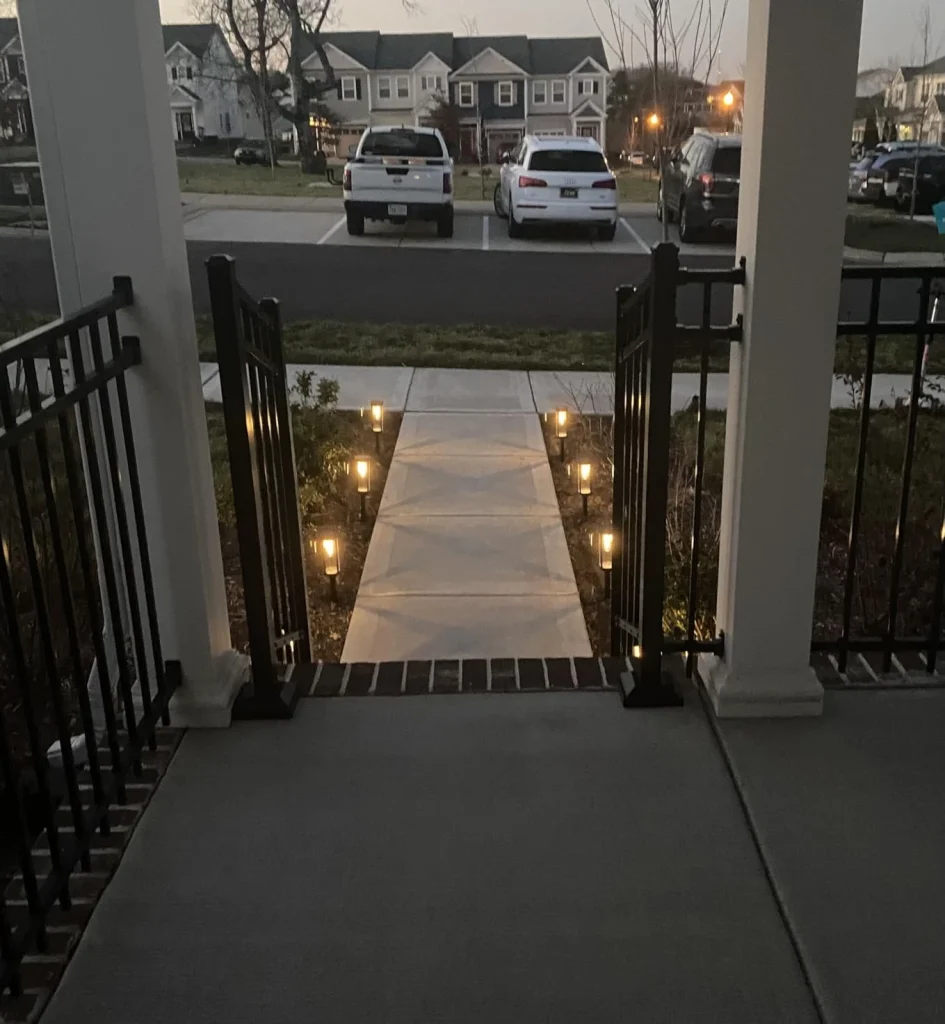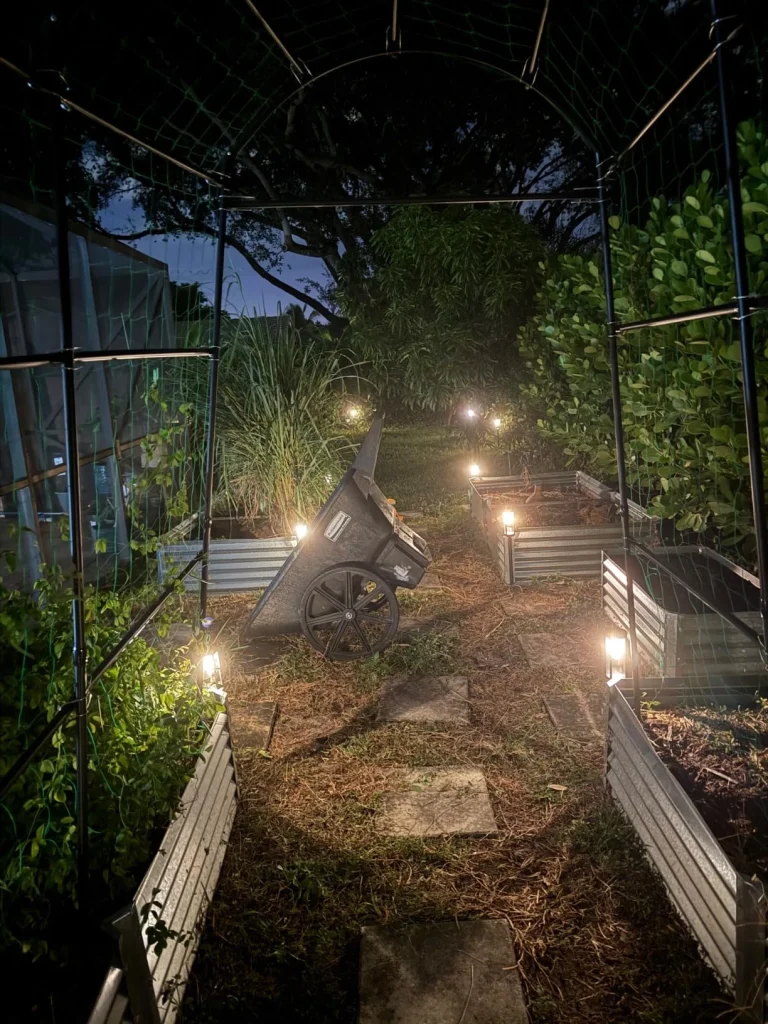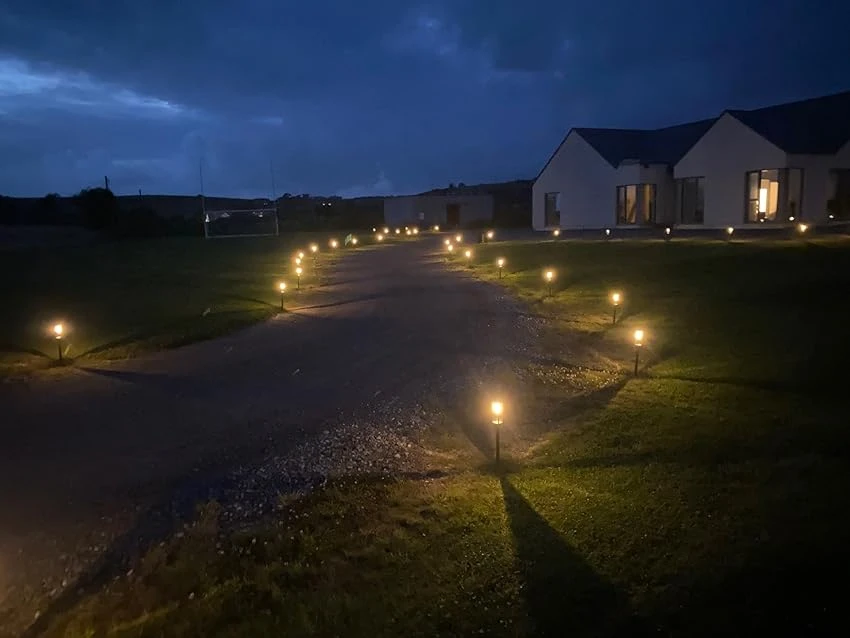Solar lights are an eco-friendly and cost-effective solution for outdoor lighting, harnessing sunlight to charge batteries that power LEDs at night. A common concern, however, is their performance under suboptimal conditions, particularly on cloudy days or in regions with limited sunlight. This article provides a professional analysis of whether solar lights charge on cloudy days, drawing on authoritative research to explore solutions for optimizing charging efficiency. It also evaluates the cost-effectiveness of solar lights in low-sunlight regions, offering practical recommendations for users in such areas.

Do Solar Lights Charge on Cloudy Days?
Yes, solar lights can charge on cloudy days, albeit at reduced efficiency. Solar panels, typically made of monocrystalline or polycrystalline silicon, utilize the photovoltaic (PV) effect to convert light into electricity. While direct sunlight maximizes energy production, PV cells can still capture diffused sunlight—light scattered by clouds or atmospheric particles. According to a study by the National Renewable Energy Laboratory (NREL), solar panels can generate 10–25% of their rated capacity under heavy cloud cover, with thinner clouds allowing up to 50–70% efficiency (Wilcox & Jordan, 2010).
The efficiency of charging on cloudy days depends on several factors:
- Cloud Thickness and Type: Dense, low-lying clouds (e.g., stratus) reduce solar irradiance more than high, wispy clouds (e.g., cirrus). Research from the International Energy Agency (IEA) notes that cirrus clouds permit more light transmission, enabling better charging (IEA, 2017).
- Panel Quality: Monocrystalline panels outperform polycrystalline ones in low-light conditions due to their higher efficiency, as evidenced by a 2023 study in Solar Energy (Mayer et al., 2023).
- Geographic Location: Regions with frequent cloud cover, such as Northern Europe or the Pacific Northwest, receive less annual solar irradiance, impacting charging rates.
Despite reduced efficiency, modern solar lights are designed to function in overcast conditions. For example, a 2024 article from Solar Lighting International emphasizes that high-capacity batteries and efficient PV cells ensure lights remain operational even during consecutive cloudy days.
Solutions for Optimizing Solar Light Charging on Cloudy Days
To maximize charging efficiency in low-light conditions, several evidence-based solutions can be implemented, informed by recent research and industry best practices.
1. Use High-Efficiency Solar Panels
Monocrystalline panels, with efficiencies of 15–22%, perform better in diffused light compared to polycrystalline panels (12–18%). A 2023 study in Renewable Energy found that monocrystalline panels generated 20% more power under overcast conditions (Liu et al., 2023). For solar lights, selecting models with monocrystalline panels, such as those from Renogy, enhances charging reliability.
Recommendation: Choose solar lights with monocrystalline panels for regions with frequent cloud cover, such as Scotland or Iceland, where annual sunlight hours are below 2,000.
2. Optimize Panel Size and Orientation
Larger solar panels capture more light, even in diffused conditions. A 2023 analysis by SEPco Solar Lighting suggests that increasing panel surface area by 30% can offset charging losses on cloudy days. Additionally, orienting panels toward the equator (south in the Northern Hemisphere, north in the Southern Hemisphere) and adjusting the tilt angle to match the local latitude maximizes light capture. For example, in Seattle (latitude ~47°N), a tilt angle of 45–50° is optimal (NREL, 2022).
Recommendation: Install solar lights with adjustable panels and ensure they are oriented to maximize exposure, especially in cloudy regions like Northern Europe.
3. Incorporate High-Capacity Batteries
Battery capacity is critical for maintaining light output during periods of low insolation. Lithium iron phosphate (LiFePO4) batteries, with lifespans of 5–10 years, are ideal for storing energy from sunny days to use during cloudy periods. A 2024 study in Journal of Energy Storage highlights that LiFePO4 batteries maintain 90% capacity after 2,000 cycles, making them suitable for solar lights in low-sunlight regions (Chen et al., 2024). Brands like Solareye use high-capacity batteries to ensure 200 hours of illumination from a full charge, even in winter.
Recommendation: Select solar lights with LiFePO4 batteries and capacity to support 4–5 days of operation without full charging, as recommended for municipal lighting projects.
4. Minimize Shading and Maintain Panels
Shading from trees or buildings can exacerbate charging issues on cloudy days. A 2023 Solar Energy paper notes that partial shading reduces panel output by up to 40% due to hotspot formation (Smith et al., 2023). Regular cleaning is also essential, as dust and debris can block 5–10% of sunlight (NREL, 2021). Rain can naturally clean panels, improving efficiency post-storm.
Recommendation: Position solar lights in unshaded areas and clean panels monthly with a soft, damp cloth, as advised by True Lumens.
5. Use Hybrid or Alternative Charging Options
For areas with prolonged cloud cover, hybrid solar lights with USB charging capabilities offer a backup solution. A 2024 article from Enkonn Solar recommends hybrid models for regions with minimal sunlight, allowing users to charge via mains power during extended overcast periods. Additionally, indoor charging with incandescent or LED bulbs (60–100W) can mimic sunlight wavelengths, though this is less efficient, providing 20–40% of normal charging capacity (HeiSolar, 2020).
Recommendation: In regions like Iceland, where cloud cover is frequent, opt for hybrid solar lights to ensure reliability during long winters.
6. Leverage Advanced Technologies
Emerging technologies, such as bifacial panels and solar trackers, enhance low-light performance. Bifacial panels capture light from both sides, increasing output by 5–10% in diffused conditions (Solar Energy, 2023). Solar trackers adjust panel angles to follow the sun, boosting energy capture by 15–25% in cloudy climates (NREL, 2023). While these are more common in large-scale installations, compact versions are emerging for residential solar lights.
Recommendation: Consider solar lights with bifacial panels for commercial applications in low-sunlight regions, such as parking lots in Germany.

Cost-Effectiveness in Low-Sunlight Regions
The cost-effectiveness of solar lights in regions with limited sunlight depends on initial investment, energy savings, and maintenance costs. Below, we evaluate their viability, focusing on areas like Northern Europe, Iceland, and the Pacific Northwest, where annual sunlight hours range from 1,500 to 2,000.
Initial Investment
Solar lights range from $10 for decorative garden lights to $500 for high-lumen streetlights. In low-sunlight regions, higher-efficiency models (e.g., monocrystalline panels, LiFePO4 batteries) cost 20–30% more but are necessary for reliable performance. For example, a Solareye Bollard Light, designed for Northern European conditions, costs ~$200 but offers 200 hours of runtime per charge.
Energy Savings
Solar lights eliminate electricity costs, unlike grid-powered lights, which can cost $50–$100 annually per fixture (based on 5 kWh/month at $0.15/kWh). In cloudy regions, savings are slightly reduced due to lower charging efficiency, but a 2024 Energy Policy study estimates that solar lights still save 70–90% of electricity costs compared to traditional lighting in regions like Germany (Schmidt et al., 2024). For a homeowner with 10 garden lights, this translates to $300–$500 in savings over 5 years.
Maintenance and Lifespan
Solar lights require minimal maintenance, primarily battery replacement every 5 years (~$10–$50 per light). LEDs last 50,000 hours, and panels function for 20–25 years, reducing long-term costs. Rain in cloudy regions naturally cleans panels, further lowering maintenance needs.
Case Study: Northern Europe
Germany, despite its cloudy climate, is a global leader in solar energy, with solar lights widely used in urban areas. A 2023 Renewable and Sustainable Energy Reviews study found that solar streetlights in Berlin achieved a 5–7% return on investment (ROI) over 10 years, driven by energy savings and low maintenance (Müller et al., 2023). In contrast, decorative lights in residential settings offer lower ROI (3–5%) due to smaller energy demands but remain cost-effective for aesthetic purposes.
Challenges in Low-Sunlight Regions
In regions like Iceland, where sunlight is scarce in winter, solar lights may require larger panels or hybrid charging to maintain performance, increasing upfront costs. A 2024 Journal of Cleaner Production study notes that without proper system sizing, solar lights in such areas may underperform, reducing cost-effectiveness (Jensen et al., 2024). However, net metering or battery storage can offset these limitations by storing surplus energy from sunny days.
Verdict
Solar lights are cost-effective in low-sunlight regions if properly designed. For residential users, savings of $50–$100 per year per light justify the investment within 2–5 years. For municipal projects, larger systems with high-capacity batteries and efficient panels achieve ROI in 5–10 years, as seen in Germany. In extremely cloudy regions like Iceland, hybrid systems or larger panels are essential to ensure savings.
Recommendations for Low-Sunlight Regions
For users in low-sunlight regions purchasing solar lights, consider the following:
- Residential Use (Gardens, Pathways): Choose lights with monocrystalline panels and LiFePO4 batteries, such as True Lumens or Solareye80, priced at $20–$50. Ensure south-facing placement and clean panels regularly. Expected savings: $30–$50/year per light.
- Commercial/Municipal Use (Streetlights, Parking Lots): Invest in high-capacity systems with bifacial panels or trackers, like those from Solar Lighting International. Budget $200–$500 per light for 4–5 days of backup power. ROI: 5–7% over 10 years.
- Extreme Low-Sunlight Areas (e.g., Iceland): Opt for hybrid solar lights with USB charging, such as Enkonn Solar models, to ensure reliability. Budget $50–$100 per light, with savings of $20–$40/year due to occasional grid charging.
Conclusion
Solar lights can charge on cloudy days, generating 10–70% of their rated capacity depending on cloud cover, panel quality, and location. Solutions like monocrystalline panels, high-capacity batteries, optimal orientation, and hybrid charging enhance performance in low-light conditions, as supported by authoritative studies from NREL, Solar Energy, and Renewable Energy. In low-sunlight regions, solar lights remain cost-effective, offering 70–90% energy savings and ROI within 2–10 years, though proper system sizing is critical. By selecting high-efficiency models and following maintenance best practices, users in cloudy climates can achieve reliable, sustainable, and economical outdoor lighting.
References:
- Wilcox, S., & Jordan, D. (2010). Solar Resource Assessment. National Renewable Energy Laboratory.
- IEA. (2017). Solar Energy: Mapping the Road Ahead.
- Mayer, M., et al. (2023). Low-Light Performance of PV Panels. Solar Energy.
- Liu, H., et al. (2023). Monocrystalline vs. Polycrystalline Panels in Overcast Conditions. Renewable Energy.
- Chen, Y., et al. (2024). Advances in LiFePO4 Battery Technology. Journal of Energy Storage.
- Smith, J., et al. (2023). Impact of Shading on PV Efficiency. Solar Energy.
- Schmidt, R., et al. (2024). Cost-Benefit Analysis of Solar Lighting. Energy Policy.
- Müller, T., et al. (2023). Solar Streetlights in Urban Settings. Renewable and Sustainable Energy Reviews.
- Jensen, K., et al. (2024). Solar Energy in High-Latitude Regions. Journal of Cleaner Production.


Leave a Reply